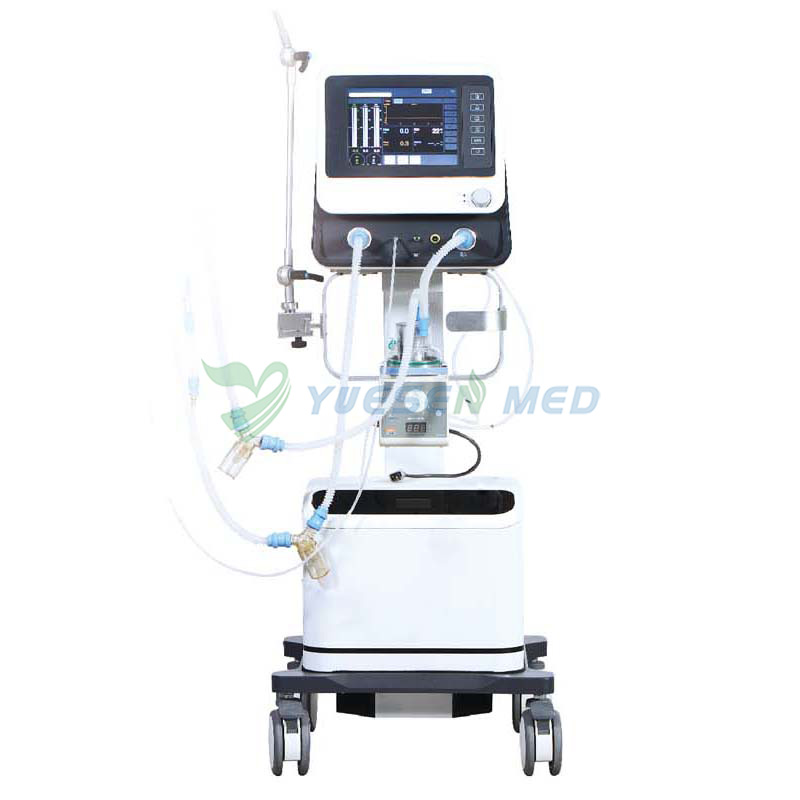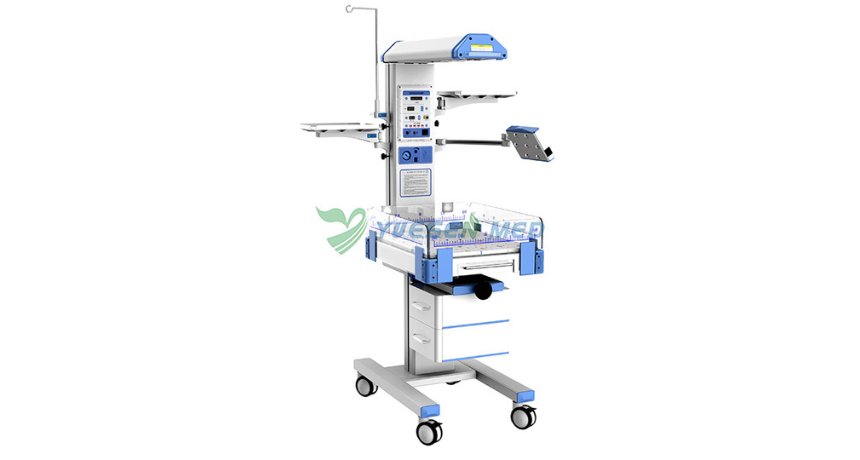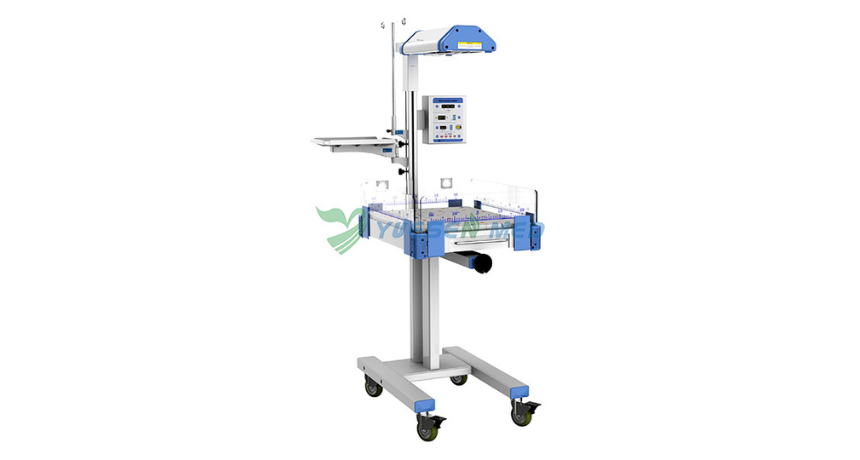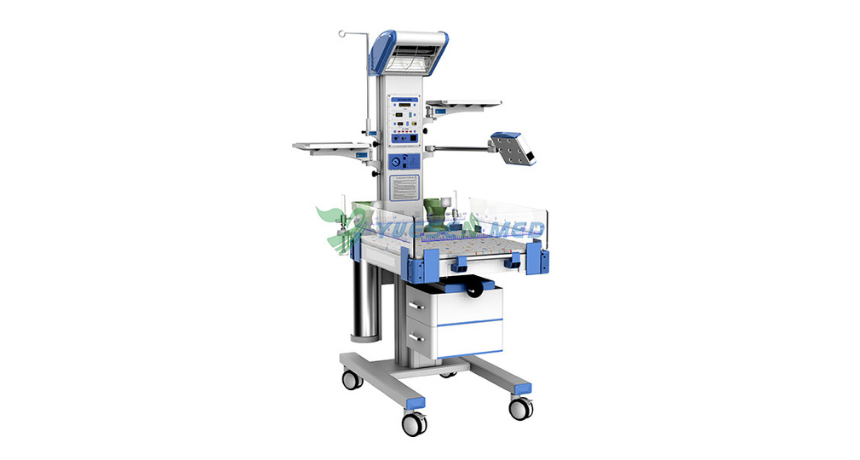Hot Products
YSX500D 50kW DR system set up and put into service in Cambodia.
YSENMED YSX500D 50kW digital x-ray system has been successfully set up and put into service in a hospital in Cambodia.
YSX056-PE serving as a vehicle-mounted x-ray in the Philippines
YSX056-PE 5.6kW portable x-ray unit has been adapted to fit on a truck, to provide mobile x-ray examination service for remote communities in the Philippines.
X Ray Machine To Zimbabwe
x ray machine, 50KW x ray machine
Microscope To Malawi
Achromatic objectives: 4X、10X、40X(S), 100X(S、Oil) Wide field eyepiece: WF10X(WF16X for option) Eyepiece head: Sliding binocular head inclined at 45° Stage: Double layer mechanical stage size 140X140mm, moving range 75X45mm Focusing: Coaxial coarse and
On the Move with CPAP: How Portable Systems Empower Neonatal Healthcare Professionals
Views : 2015
Update time : 2024-04-26 14:43:40
In the dynamic world of neonatal healthcare, mobility is key. Neonatal healthcare professionals are constantly on the move, attending to tiny patients in various settings such as hospitals, clinics, and even during emergency transfers. Ensuring optimal care for premature infants requires innovative solutions that can adapt to these ever-changing environments. One such solution that has revolutionized neonatal care is the development of portable CPAP (Continuous Positive Airway Pressure) systems.

Understanding the Significance of CPAP in Neonatal Care
What is CPAP?
CPAP, short for Continuous Positive Airway Pressure, is a medical therapy commonly used in neonatal intensive care units (NICUs) to support the breathing of premature infants. It involves delivering a continuous flow of air or a mixture of air and oxygen into the infant's lungs through small tubes or prongs placed in their nostrils.
Importance of CPAP in Neonatal Care
Premature infants often face challenges with breathing due to underdeveloped lungs and respiratory distress syndrome (RDS). CPAP helps keep the airways open, prevents the collapse of the lungs, and improves oxygenation, thereby reducing the need for more invasive respiratory support such as mechanical ventilation.
The Evolution of Portable CPAP Systems
Traditional CPAP Systems
Historically, CPAP therapy has been administered using large, stationary machines that are cumbersome and immobile. While effective, these traditional systems limit the mobility of healthcare providers and restrict the care options available for infants requiring CPAP support.
Introduction of Portable CPAP Systems
Recognizing the need for greater flexibility in neonatal care, manufacturers have developed portable CPAP systems that are lightweight, compact, and easily transportable. These systems retain the effectiveness of traditional CPAP therapy while offering the freedom to provide continuous care across various settings.
Features of Portable CPAP Systems
Portable CPAP systems are designed with features specifically tailored to the needs of neonatal healthcare professionals on the move. These features may include:
- Compact Size: Portable CPAP systems are small and lightweight, allowing healthcare providers to transport them easily.
- Battery Operation: Many portable CPAP systems are battery-operated, eliminating the need for a continuous power source and enabling uninterrupted therapy during emergency transfers or power outages.
- Adjustable Settings: These systems offer adjustable pressure settings to accommodate the individual needs of each infant, providing customized respiratory support.
- User-Friendly Interface: Intuitive controls and displays make portable CPAP systems easy to operate, even in high-stress situations.
- Durable Construction: Built to withstand the rigors of transport and use in diverse environments, portable CPAP systems are durable and reliable.
Advantages of Portable CPAP Systems in Neonatal Care
Enhanced Mobility
The primary advantage of portable CPAP systems is the enhanced mobility they afford neonatal healthcare professionals. With these systems, caregivers can provide CPAP therapy wherever it is needed, whether in the NICU, during intra-hospital transfers, or in remote healthcare facilities with limited resources.
Continuity of Care
Portable CPAP systems facilitate continuity of care by ensuring uninterrupted respiratory support for premature infants. Healthcare providers can seamlessly transition between care settings without compromising the quality or effectiveness of CPAP therapy.
Improved Outcomes
Studies have shown that early initiation of CPAP therapy in premature infants can lead to improved respiratory function, reduced incidence of complications such as bronchopulmonary dysplasia (BPD), and shorter hospital stays. Portable CPAP systems enable prompt initiation of therapy, potentially contributing to better outcomes for neonatal patients.
Challenges and Considerations
Cost
While portable CPAP systems offer numerous benefits, they may also come with a higher upfront cost compared to traditional CPAP machines. Healthcare facilities must weigh the investment against the potential advantages in terms of improved patient care and operational efficiency.
Training and Education
Effective use of portable CPAP systems requires proper training and education for healthcare providers. Facilities must ensure that staff members are adequately trained in the use of these devices to maximize their benefits and minimize the risk of errors or complications.
Future Directions
Technological Advancements
As technology continues to advance, we can expect further innovations in portable CPAP systems, including integration with telemedicine platforms, enhanced monitoring capabilities, and automation features to optimize therapy delivery.
Global Access
Efforts are underway to improve access to portable CPAP systems in low-resource settings and underserved communities around the world. Initiatives such as donations, subsidies, and training programs aim to expand the reach of these life-saving technologies to those who need them most.
Conclusion
Portable CPAP systems represent a significant advancement in neonatal care, empowering healthcare professionals to deliver high-quality respiratory support to premature infants wherever they may be. With their compact design, user-friendly features, and ability to operate on battery power, these systems offer unparalleled flexibility and mobility in the provision of CPAP therapy. As technology continues to evolve and efforts to improve global access progress, portable CPAP systems will play an increasingly vital role in improving outcomes for neonatal patients worldwide.
FAQs:
How do portable CPAP systems differ from traditional CPAP machines?
Portable CPAP systems are designed to be lightweight, compact, and easily transportable, allowing neonatal healthcare professionals to provide continuous respiratory support to premature infants in various settings. In contrast, traditional CPAP machines are larger, stationary devices typically used within the confines of a neonatal intensive care unit (NICU).
Are portable CPAP systems as effective as traditional CPAP machines?
Yes, portable CPAP systems are just as effective as traditional CPAP machines in providing respiratory support to premature infants. They deliver a continuous flow of air or oxygen to keep the airways open and prevent lung collapse, thereby improving oxygenation and reducing the need for more invasive forms of respiratory support.
What are the primary benefits of using portable CPAP systems in neonatal care?
The primary benefits of using portable CPAP systems include enhanced mobility, continuity of care, and improved outcomes for premature infants. These systems enable healthcare providers to deliver CPAP therapy wherever it is needed, ensuring uninterrupted respiratory support and potentially leading to shorter hospital stays and reduced complications.
How do healthcare providers ensure the safe use of portable CPAP systems?
Healthcare providers ensure the safe use of portable CPAP systems by receiving proper training and education on device operation, maintenance, and troubleshooting. Additionally, facilities implement protocols and guidelines for the use of these systems, including regular equipment checks and adherence to infection control practices.
Can portable CPAP systems be used in low-resource settings or during emergency transfers?
Yes, portable CPAP systems are particularly valuable in low-resource settings and during emergency transfers where access to traditional NICU equipment may be limited. Their compact size, battery operation, and user-friendly features make them well-suited for providing critical respiratory support to premature infants in diverse healthcare environments.

Understanding the Significance of CPAP in Neonatal Care
What is CPAP?
CPAP, short for Continuous Positive Airway Pressure, is a medical therapy commonly used in neonatal intensive care units (NICUs) to support the breathing of premature infants. It involves delivering a continuous flow of air or a mixture of air and oxygen into the infant's lungs through small tubes or prongs placed in their nostrils.
Importance of CPAP in Neonatal Care
Premature infants often face challenges with breathing due to underdeveloped lungs and respiratory distress syndrome (RDS). CPAP helps keep the airways open, prevents the collapse of the lungs, and improves oxygenation, thereby reducing the need for more invasive respiratory support such as mechanical ventilation.
The Evolution of Portable CPAP Systems
Traditional CPAP Systems
Historically, CPAP therapy has been administered using large, stationary machines that are cumbersome and immobile. While effective, these traditional systems limit the mobility of healthcare providers and restrict the care options available for infants requiring CPAP support.
Introduction of Portable CPAP Systems
Recognizing the need for greater flexibility in neonatal care, manufacturers have developed portable CPAP systems that are lightweight, compact, and easily transportable. These systems retain the effectiveness of traditional CPAP therapy while offering the freedom to provide continuous care across various settings.
Features of Portable CPAP Systems
Portable CPAP systems are designed with features specifically tailored to the needs of neonatal healthcare professionals on the move. These features may include:
- Compact Size: Portable CPAP systems are small and lightweight, allowing healthcare providers to transport them easily.
- Battery Operation: Many portable CPAP systems are battery-operated, eliminating the need for a continuous power source and enabling uninterrupted therapy during emergency transfers or power outages.
- Adjustable Settings: These systems offer adjustable pressure settings to accommodate the individual needs of each infant, providing customized respiratory support.
- User-Friendly Interface: Intuitive controls and displays make portable CPAP systems easy to operate, even in high-stress situations.
- Durable Construction: Built to withstand the rigors of transport and use in diverse environments, portable CPAP systems are durable and reliable.
Advantages of Portable CPAP Systems in Neonatal Care
Enhanced Mobility
The primary advantage of portable CPAP systems is the enhanced mobility they afford neonatal healthcare professionals. With these systems, caregivers can provide CPAP therapy wherever it is needed, whether in the NICU, during intra-hospital transfers, or in remote healthcare facilities with limited resources.
Continuity of Care
Portable CPAP systems facilitate continuity of care by ensuring uninterrupted respiratory support for premature infants. Healthcare providers can seamlessly transition between care settings without compromising the quality or effectiveness of CPAP therapy.
Improved Outcomes
Studies have shown that early initiation of CPAP therapy in premature infants can lead to improved respiratory function, reduced incidence of complications such as bronchopulmonary dysplasia (BPD), and shorter hospital stays. Portable CPAP systems enable prompt initiation of therapy, potentially contributing to better outcomes for neonatal patients.
Challenges and Considerations
Cost
While portable CPAP systems offer numerous benefits, they may also come with a higher upfront cost compared to traditional CPAP machines. Healthcare facilities must weigh the investment against the potential advantages in terms of improved patient care and operational efficiency.
Training and Education
Effective use of portable CPAP systems requires proper training and education for healthcare providers. Facilities must ensure that staff members are adequately trained in the use of these devices to maximize their benefits and minimize the risk of errors or complications.
Future Directions
Technological Advancements
As technology continues to advance, we can expect further innovations in portable CPAP systems, including integration with telemedicine platforms, enhanced monitoring capabilities, and automation features to optimize therapy delivery.
Global Access
Efforts are underway to improve access to portable CPAP systems in low-resource settings and underserved communities around the world. Initiatives such as donations, subsidies, and training programs aim to expand the reach of these life-saving technologies to those who need them most.
Conclusion
Portable CPAP systems represent a significant advancement in neonatal care, empowering healthcare professionals to deliver high-quality respiratory support to premature infants wherever they may be. With their compact design, user-friendly features, and ability to operate on battery power, these systems offer unparalleled flexibility and mobility in the provision of CPAP therapy. As technology continues to evolve and efforts to improve global access progress, portable CPAP systems will play an increasingly vital role in improving outcomes for neonatal patients worldwide.
FAQs:
How do portable CPAP systems differ from traditional CPAP machines?
Portable CPAP systems are designed to be lightweight, compact, and easily transportable, allowing neonatal healthcare professionals to provide continuous respiratory support to premature infants in various settings. In contrast, traditional CPAP machines are larger, stationary devices typically used within the confines of a neonatal intensive care unit (NICU).
Are portable CPAP systems as effective as traditional CPAP machines?
Yes, portable CPAP systems are just as effective as traditional CPAP machines in providing respiratory support to premature infants. They deliver a continuous flow of air or oxygen to keep the airways open and prevent lung collapse, thereby improving oxygenation and reducing the need for more invasive forms of respiratory support.
What are the primary benefits of using portable CPAP systems in neonatal care?
The primary benefits of using portable CPAP systems include enhanced mobility, continuity of care, and improved outcomes for premature infants. These systems enable healthcare providers to deliver CPAP therapy wherever it is needed, ensuring uninterrupted respiratory support and potentially leading to shorter hospital stays and reduced complications.
How do healthcare providers ensure the safe use of portable CPAP systems?
Healthcare providers ensure the safe use of portable CPAP systems by receiving proper training and education on device operation, maintenance, and troubleshooting. Additionally, facilities implement protocols and guidelines for the use of these systems, including regular equipment checks and adherence to infection control practices.
Can portable CPAP systems be used in low-resource settings or during emergency transfers?
Yes, portable CPAP systems are particularly valuable in low-resource settings and during emergency transfers where access to traditional NICU equipment may be limited. Their compact size, battery operation, and user-friendly features make them well-suited for providing critical respiratory support to premature infants in diverse healthcare environments.
Related News
Read More >>
 What is the Difference Between Radiant Warmer and Phototherapy?
What is the Difference Between Radiant Warmer and Phototherapy?
Apr .19.2025
Radiant warmers and phototherapy are crucial in neonatal care, but they serve different purposes. Let's dive into the nitty-gritty of these two techniques and explore how they differ, and when each is appropriate.
 YSX056-PE portable digital x-ray unit set up in the Philippines
YSX056-PE portable digital x-ray unit set up in the Philippines
Apr .19.2025
YSX056-PE portable digital x-ray unit has been set up in a hospital in the Philippines and the good quality images please the doctors.
 Is an Infant Radiant Warmer Good for Babies' Health?
Is an Infant Radiant Warmer Good for Babies' Health?
Apr .13.2025
What exactly is the infant radiant warmer, and how does it contribute to a baby's health? Let's dive into this topic and explore the ins and outs of infant radiant warmers.
 What is an Infant Radiant Warmer?
What is an Infant Radiant Warmer?
Apr .12.2025
One of the unsung heroes in neonatal care is the infant radiant warmer. But what exactly is it? Let's dive into the world of infant care and explore the ins and outs of this vital device.



